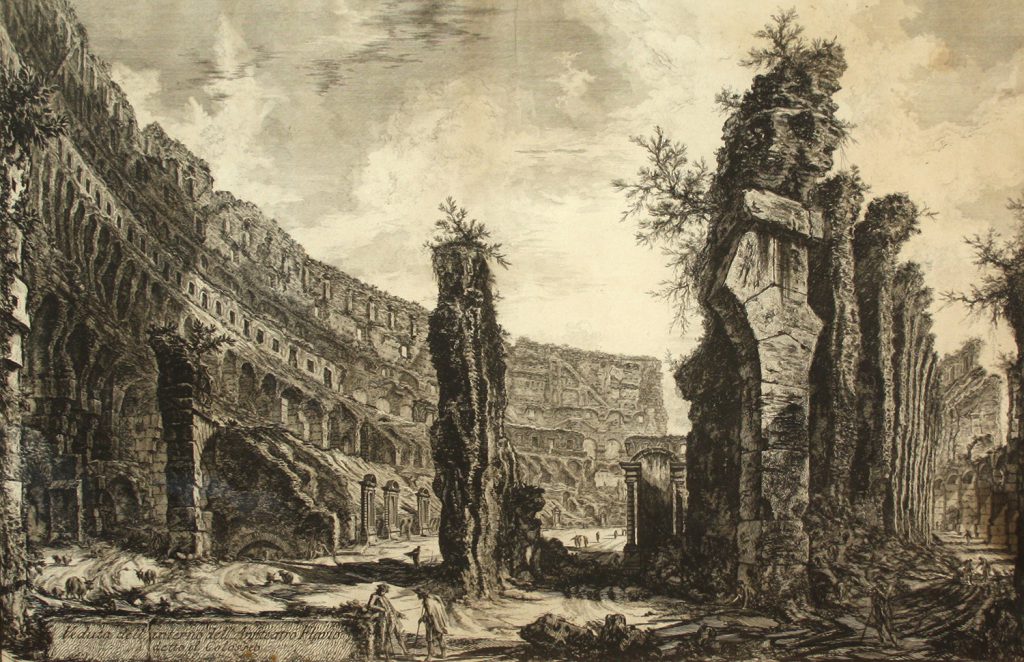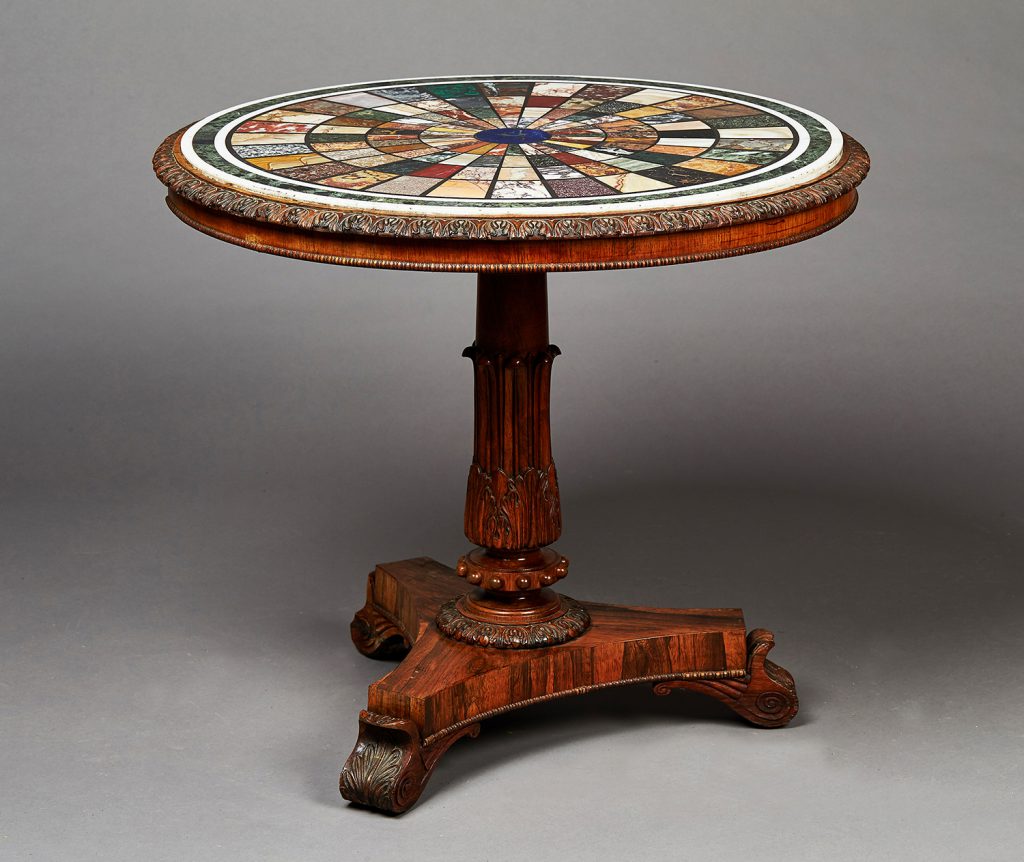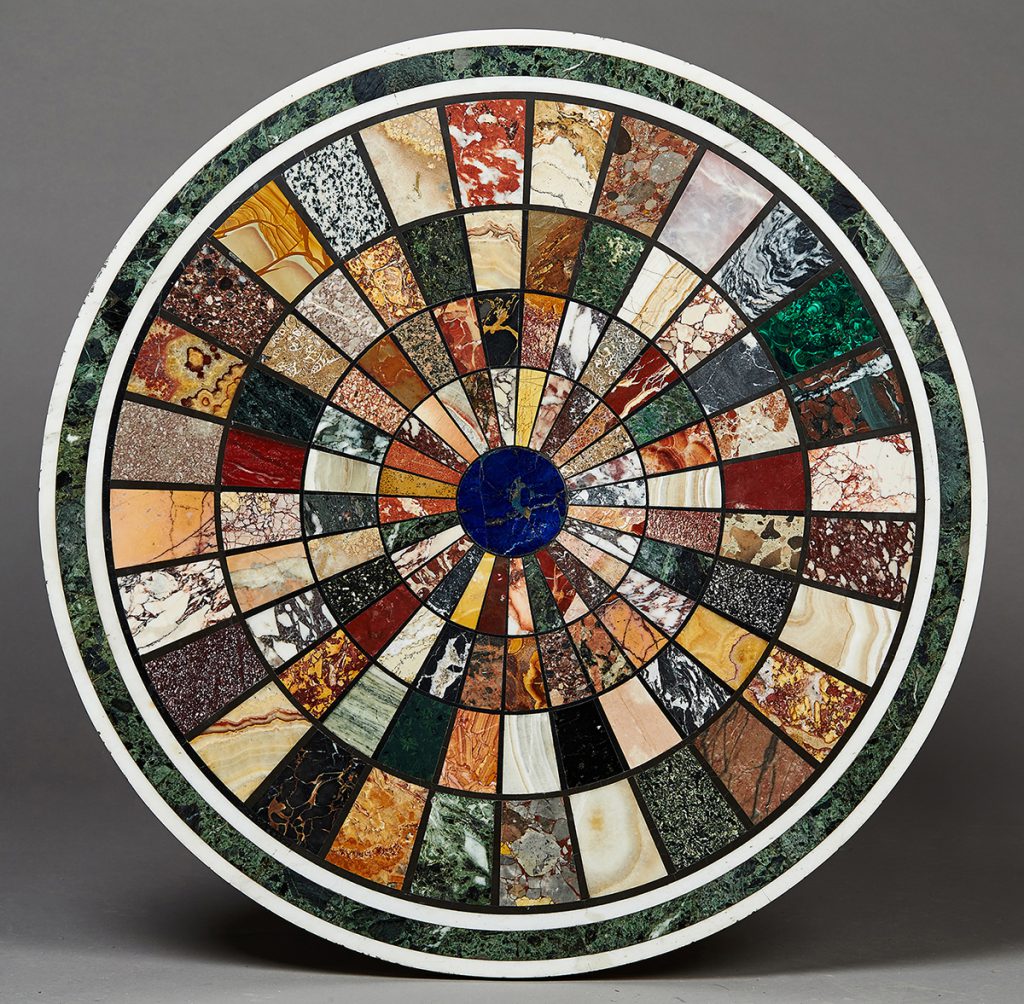
The gap year and an opportunity to travel seems, to many of us, a relatively new phenomenon – a chance for our children to broaden their experience of the world. But there is nothing new in this. Georgian polite society would send their sons to the Continent once they had completed their formal education.
The Grand Tour could last anything up to five years. Young men and their tutors would visit the great houses, palaces and cities of Europe. There they would admire the ruins of antiquity and bring back trophies of their tour – objects which were both genuine and imitations. Examples of these pursuits can be found in the collections at Petworth House in West Sussex where the 2nd Earl of Egremont (1710-1763) was a particularly cultured Grand Tourist.
The late Georgian period (1760-1800) would be defined by Neo- classical taste informed by the newly discovered rich Roman interiors at Herculaneum (from 1748) and Pompeii (from 1758). These cities had been hidden from the world by the eruption of Mount Vesuvius in AD 79. 18th century excavations revealed exquisite interiors with delicate symmetrical decorative motifs which inspired artists and designers back home in Britain.

The Neo-classical specimen marble table illustrated is a good example of this and was probably designed by Gillows of Lancaster. By the mid-18th century Gillows had acquired a reputation for manufacturing furniture of the highest quality and by the late 1700s the firm had offices in Lancaster and London. There are records of Gillows supplying tables to Stephen Tempest to support marble slabs purchased by him in Italy. However, this particular table was most recently owned by the late Baroness Herries of Terregles (1938-2014). Lady Anne’s father was the 16th Duke of Norfolk and she had grown up at Arundel Castle, the Norfolk’s family seat in West Sussex. The circular top is inset with radiating bands of specimen marbles, including lapis lazuli, malachite, porphyry and agates, within a border of verde-antico The table’s base is delicately carved with a continuous band of acanthus leaves, raised on a carved tulip cusp stem with a beaded knop, the triform base has carved scroll feet fitted with castors.

The scene depicted by Giovanni Battista Piranesi (1720-1778) is typical of his ‘Vedutes’ (views), especially of Rome, which once again became an important artistic and cultural centre in the 18th century. Piranesi was an Italian artist famous for his etchings which would inspire a generation of philosophers, architects, artists and academics.
These objects speak loudly of our shared European heritage. I am confident and hopeful that the continuous philosophical and cultural heritage, which forms part of our shared narrative with the nations of Continental Europe, will continue to bless us as our relationships with one another evolve.
Learning and culture were considered and remain important markers of civilisation in Europe.
By Rupert Toovey, a senior director of Toovey’s, the leading fine art auction house in West Sussex, based on the A24 at Washington. Originally published in the West Sussex Gazette.